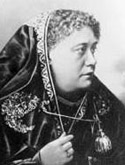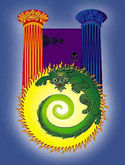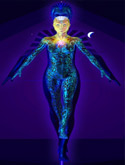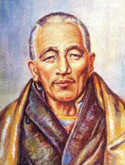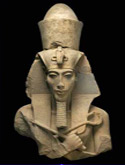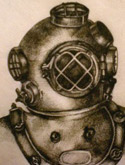William Blake’s Soul’s Purpose Formula
Cancer rising, ruled by Neptune in Leo in the second house with Leo on the cusp, ruled by the Sun in Sagittarius in the fifth house with Libra on the cusp.
In 1757 William Blake began his incarnation, not in a rural setting as was so often the case with poets and artists prior to his time, but in the inner city of London where his soul could better understand and be involved with the consciousness of the masses, as dictated by his Cancer ascendant. (See Esoteric Meanings of the Rising Signs.) At the same time, young Blake enjoyed communing with nature and often took walks through the country to nearby villages. On one of these walks, at the age of ten, he experienced a vision of a tree full of angels. So we see that even early in his life, he was drawing upon the energy of the esoteric ruler of his ascendant, the mystical Neptune, placed in his second house of appreciation of inner beauty and the Divine Light.
Neptune in Blake’s chart was in Leo, the sign of self expression of the Divinity within. With this combination of Neptune in the house of inner beauty and in the sign of self expression, Blake’s boyhood desire to be an artist resulted in his attending a drawing school as a child. At age 14 he was apprenticed to an engraver, and at age 22 he entered the Royal Academy.
The second house is not only the house of learning to appreciate the essential beauty of all things, but it is also the house where we must focus on our own resources and how to rightly use them. Therefore, it is no surprise that Blake found himself turning to his art for self-sustenance in his early twenties when he began selling his engravings as a means of livelihood. Upon settling into a marriage, he set up a printing business, but soon had to abandon it for reason of financial failure. Again he had to return to selling his own engravings to support himself and his wife.
Ruling Leo both traditionally and esoterically, the Sun is the third element in Blake’s Soul’s Purpose Formula. With the Sun in his fifth house of creativity, Blake’s spiritual service to the world, and his legacy, was his art. Blake’s Sun was in Sagittarius, the sign of variety. Therefore, his art took the forms of poetry, prose, paintings, and engravings. Sagittarius is also associated with publishing, an activity in which Blake engaged early in his life with the publication of his first poetry book when he was only in his twenties. At the age of 32 he self-published the next of what would be several books of poetry, all of which he would illustrate with his own engravings, printing and coloring them by hand.
In his early years at the Royal Academy, Blake had become part of a circle of politically liberal intellectuals who had helped him cultivate the progressive philosophies which he would later express in his art and writing.
During those years as a young adult in the late 1700s, Blake had found himself steeped in discussions and news of the political oppressions and mass revolutions that were occurring in both in France and in America. The budding philosopher/poet, with his Sagittarian Sun, thus had the perfect opportunity to understand the common human dilemma of that time which transcended national boundaries. From this he developed an view of human nature that would later be expressed in his works of poetry and engravings.
With Libra on the cusp of the house containing his Sagittarian Sun, Blake’s works would address not only the philosophical principle(Sagittarius) of human dignity and Divinity (Sun), but also the need for integration of this principle into one’s psyche in order to restore the wholeness (Libra) of one’s essential nature.
Blake himself was a revolutionary at heart, sympathizing with those who were being oppressed by their authoritarian governments. He perceived both church and state to be too restrictive, and he saw the birth of the industrial revolution as a threat that would reduce humans to the status of animals working in a mill. He felt that over the centuries, Christianity had destroyed human dignity to a point where the human being had come to be regarded as basically stupid, sinful, and almost hopeless. His argument was that all of man’s “lower” traits were as much a part of the Divine scheme as anything else, and that these lower traits did not necessarily contradict the harmony of nature. Asserting that it was natural for people to fight for causes in The Marriage of Heaven and Hell, he referred to “the wrath of the lion” as “the wisdom of God,” using the imagery of the Lion of Leo, the sign of his Neptune, the esoteric ruler of his ascendant.Blake also preferred the symbol of the courageous and aggressive tiger to the meek and withdrawing Christian lamb, as reflected in the following well known example of his poetry:
“Tyger, tyger burning bright in the forests of the night..”
Leo, the sign of Blake’s esoteric chart ruler, is generally associated not only with the lion, but with all members of the cat family. Three other elements of his Soul’s Purpose Formula are also expressed in the poetry: (1) the Sun, which is the brightest burning orb in our sky; (2) Sagittarius, which is the sign of the expansiveness of nature, with its encompassing forests; and (3) Cancer, which is the “midnight” sign, symbolically the darkest, as it corresponds to the fourth house of the horoscope, the place where the Sun is at midnight. With these astrological correspondences, then, we have:
“Tiger, tiger (Leo) burning bright (Sun) in the forests (Sagittarius) of the night (Cancer).”
As is often true of Cancer-rising people, William Blake had a strongly visual mind which was capable of “eidetic” imagery; that is, he saw, in his mind’s eye, not just flat images, but three-dimensional figures as if they were standing in front of him. He was a highly original artist and, true to his strong fifth house and Leo, laid more emphasis on his individual creativity than in catering to public taste. A true mystic in the Neptunian sense, he refused to be persuaded by facts and reality, and thus is been regarded as one of the poets best representing the Romantic era.
Blake’s paintings are unusual in that they depict human bodies which are muscular and corporeal (second house), while the paintings themselves, and often the bodies, also partake of Neptune’s energy by having a certain ethereal quality to them. His art conveys a certain spirited “fieriness” (Leo, Sagittarius) in meaning and imagery, while retaining the flowing lines and more subtle colors of the water element of Cancer. Fire and water are blended in an ingenious way throughout his paintings, reflecting the strong fire-water emphasis in his Soul’s Purpose Formula.
One of his paintings, Nebuchadnezzar, depicts an animal-like man on hands and knees with a long beard and anguished expression, which gives him the appearance of a lion (Leo). This combination of man and animal is reflective of Blake’s Sun sign of Sagittarius by being analogous to the Sagittarian centaur, the torso of a man joined to the body of a horse.
The Sun, as the center of our solar system, can symbolize the center of anything, and Sagittarius is the sign associated with publishing. True to his Sun in Sagittarius, the third element of his Soul’s Purpose Formula, Blake was the center of his own publishing company, personally producing his own illustrated books of poetry. Again, the placement of his ascendant’s esoteric ruler, Neptune, in his second house shows that his spiritual purpose involved developing, and learning to rely upon, his own resources without becoming entwined in the resources of other people.
The soul-oriented person with Cancer rising has an above-average sensitivity toward the needs and predicaments of ordinary, everyday people, giving an innate ability to tune into mass consciousness. The highest expression of a Cancer ascendant is to use this natural ability to tune into the masses in order to somehow help raise the general awareness of the entire culture, both in the present and in the future. This is often accomplished on a subtle level, appealing to people’s subconscious minds through the use of imagery or the development of new archetypes of consciousness.
William Blake was especially attuned to the human predicament because of the prominence of the signs of Leo, Sagittarius, and Aquarius being so abundantly represented in his chart. He had Neptune and Mars in Leo, Saturn in Aquarius, and the Sun, Jupiter, and Pluto in Sagittarius. On top of this, he had the South Node in Aquarius and the North Node in Leo. These three signs, Leo, Sagittarius, and Aquarius, are the signs, according to the Tibetan Master Djwhal Khul, more closely connected to Humanity as a whole than are any of the other signs. The reason for this is that Leo, Sagittarius, and Aquarius are the signs that transmit the Fifth Ray of Concrete Knowledge and Science, the Ray upon which the personality of Humanity manifests.
Based on my perceptions of Blake’s chart, one expression of his Soul’s Purpose Formula might be:
Create beautiful imagery portraying the body/spirit dilemma of Humanity in order to make the masses more aware of their need to achieve wholeness and greater autonomy through personal expression of their innate Divinity.
With the astrological symbols added:
Create (Leo) beautiful (second house) imagery (Neptune) portraying the body/spirit dilemma of Humanity (Sagittarius) in order to make the masses more aware (Cancer ascendant) of their need to achieve wholeness (Libra) and greaterautonomy (Sun) through personal expression of their innate Divinity (Leo).
In The Zodiac and the Soul, astrologer C.E.O. Carter noted that Blake was less immersed in the physical world than was the ordinary human being of his time. Perhaps this speaks to Blake’s Neptune being in his second house. In expression of this Neptune placement, Blake once said that “man has no body apart from his soul” because that which we call the body is merely the “portion of soul discerned by the five senses.” Here Neptune, the great dissolver of boundaries, dissolves theboundary between the physical body (second house) and its point of origin (Cancer) the soul. (The sign of Cancer is said by Djwhal Khul to represent the anima mundi, or the soul of the world, the essential Divine consciousness of all manifested things.)
William Blake is seen today as having been a prophet of the twentieth century physical and spiritual repercussions of the mechanization which had begun in the eighteenth and nineteenth centuries. Neptune, the esoteric ruler of his chart, dissolves the boundary of time, while his Sun sign of Sagittarius is esoterically the sign of intuition and, therefore, prophecy.
Having lived and died as a pauper, William Blake was not recognized and acclaimed as an artist until well after his death. It was not until the early twentieth century that Blake’s name was popularized by T. S. Elliot in an essay written about him. With his relatively recent increase in popularity, William Blake continues to fulfill his Cancerian purpose of raising mass consciousness to higher levels.

